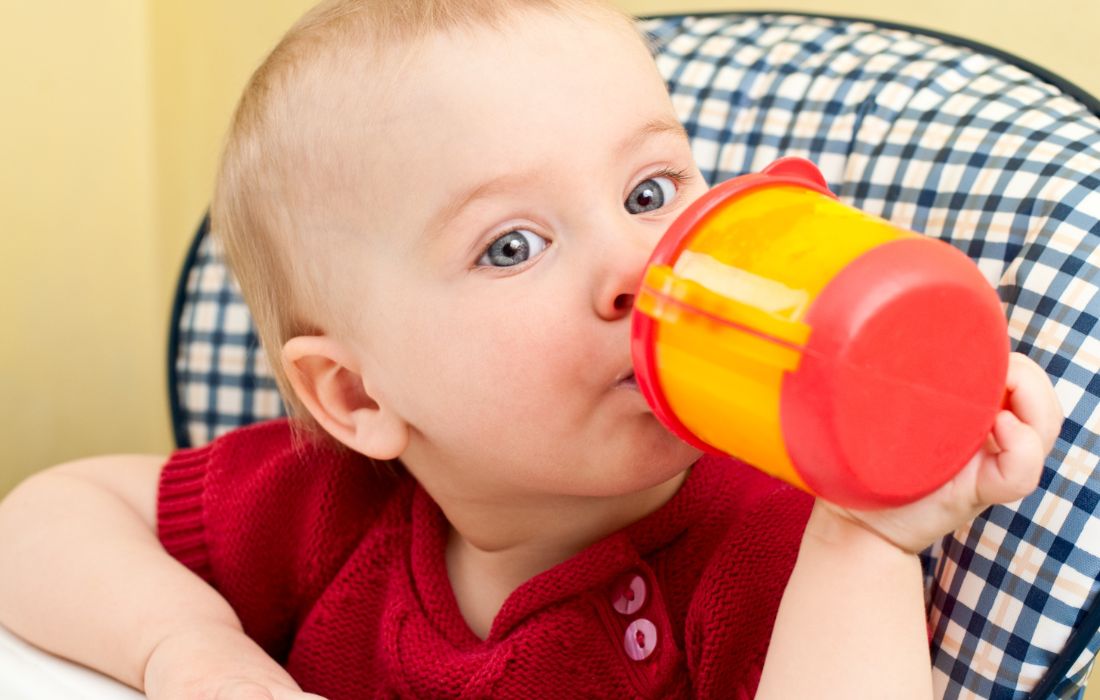Night Weaning After Six Months: How to Gently End Night Feedings
The most common problem behavioral sleep disorders is that most children who experience problems falling asleep have never learned to fall asleep without a breast or bottle in their mouths. Their need for this sleep crutch compounds as they get older and no longer physically need a bottle or breast before going to sleep. As they become toddlers, they are not equipped with the necessary tools and habits to put themselves to sleep. The good news is that it’s never too late to address the problem of baby feeding at night and remedy it. Night weaning is appropriate for healthy children older than six months. Learn to:
- Address your child’s hunger clock
- Gently reduce night feeds and “dream feed”
- Gradually night wean
- Introduce a cup
- Gently eliminate toddler feedings
Address Your Child’s Hunger Clock
Let’s begin by addressing your child’s hunger clock, making sure she is taking in most of her calories during the day, not waiting to feast at night. Keep a log of her daily diet and check with your doctor if you are unsure of what her intake should be. Make sure your child is not overtired when putting her to bed for either a nap or at bedtime. Proper rest will make night weaning much easier for her and you. As with breaking any sleep crutch, the key to success is consistency.
Have no idea where to begin solving your child’s sleep issues?
Start with this guide.
Reduce the Number of Night Feeds Before Night Weaning
If you or your pediatrician think it’s too early for total night weaning, or if you want to cut back on your nighttime feedings but aren’t ready to eliminate them all together, restrict feeding to just once per night. Feed her quickly and avoid any other interaction that will encourage her to stay up, play, or cling to you.
Be consistent! Choose an approach and stick to it. Only feed her once at night and not again until after 6:00 a.m. If she wakes up at other times wanting food, find other ways to calm her. Sit by her crib and offer physical and verbal reassurance until she is asleep. Pick her up to calm her if need be, but not until she falls asleep.
Is your baby waking up too early?
Read: Early Rising in Babies and Toddlers – 10 Tips to Resolve Early Wake-Ups
Try an Extra Night Feed or “Dream Feed”
You can try to dream feed her. Dream feeding means waking her, or half-waking her, for a final feeding before your own bedtime. Usually that falls around 11:00 p.m. Alternatively, you can wait until she wakes up, as long as it’s at least FOUR hours after her last feeding, which usually means around 11 p.m. or 12:00 midnight. Then don’t feed her again until she wakes up in the morning, 6:00 a.m. at the earliest. This is a step along the way to night weaning for babies who still can’t go the full night without some calories.
How to Night Wean Gradually
When night weaning children from six to twelve months, I usually suggest a gentle and gradual elimination of nighttime feedings. Overnight, try cutting down on nursing time. If she usually feeds for twenty minutes during the night, give her fifteen. Keep cutting back every few days until she’s ready to give it up. Make sure you unlatch her when she finishes eating heartily — don’t let her gently suckle and doze. Same with the bottle — let her eat, but don’t let her play with it.
With a nighttime bottle, you can also try switching to a smaller bottle, put less formula in the bottle, or gradually dilute the formula so that when it gets very watery, she might decide it’s not worth getting up for. Then she’s night weaning herself! When the nursing is cut back to five minutes, or the bottle to three ounces, it’s time to stop. Anything smaller is just a tease. Get her back to bed while she’s drowsy, but awake.

Talk to a Gentle Sleep Coach and get sleep help!
Book a 20-minute call for just $45.
Introduce a Cup
Try to introduce a cup before her first birthday to help with night weaning. As babies get older, they become emotionally attached to the bottle or breast. It basically becomes a “lovey” and can contribute to the ingrained habit of waking up at night in search of it. Nurse or bottle feed at set times, and use the cup at set times. Most moms and babies like nursing or bottle feeding during the morning and night, and use the cup during the day, especially with solids at mealtime. Don’t let her fall asleep on the breast or bottle, though! And encourage the attachment to a lovey.
Does your child have a lovey?
Read: The Lovey — Your Child’s First Best Friend
Eliminating Toddler Night Feedings
Toddlers need to begin eliminating the nighttime noshing by changing from nursing or bottle feeding before bed to drinking from a cup. The goal is to have your child drink a cup of water instead of milk before bed — or nothing at all. Milk encourages the child to want it again every time they stir or wake during the night. A cup of water — a sippy cup or sports bottle — by the bedside will encourage your child to wean herself from milk. Not to mention, your child’s dentist will approve! But be firm in allowing only one cup that has to last all night. You will not keep coming back to give her more.
With infants, a gradual night weaning is best, but after her first birthday, it’s usually best just to stop cold. When she wakes up at night wanting to nurse or take a bottle, sit by her side and find other ways to calm her. Pat her mattress a bit and whisper “sh-sh-sh,” and tell her it’s nighttime. Don’t cave in and feed her or the inconsistency, aka “intermittent reinforcement”, is going to make the change more prolonged and difficult for her.
If you can’t bear stopping cold, then try a dream feed for a few nights, but no more than a week.
Consistency is Key in Night Weaning
As with breaking any sleep crutch, consistency is the key to success with night weaning. Once you begin a new habit, do not go back! It will confuse the child and take twice as long to break this sometimes emotional need to nosh at nighttime. Focus on bedtime – drowsy but awake. If your child is put into her crib or bed asleep, then these nighttime techniques will NOT work. Gently encourage and offer reassurance. Present lovies or a new stuffed animal friend to help with the change. Often, the stuffed animals can “hold” the new big girl sippy cup on a nightstand during the night in case your child needs it. Your loving words, gentle touch, and soft voice will go a long way in making this a quick change for everyone!
Good luck!




